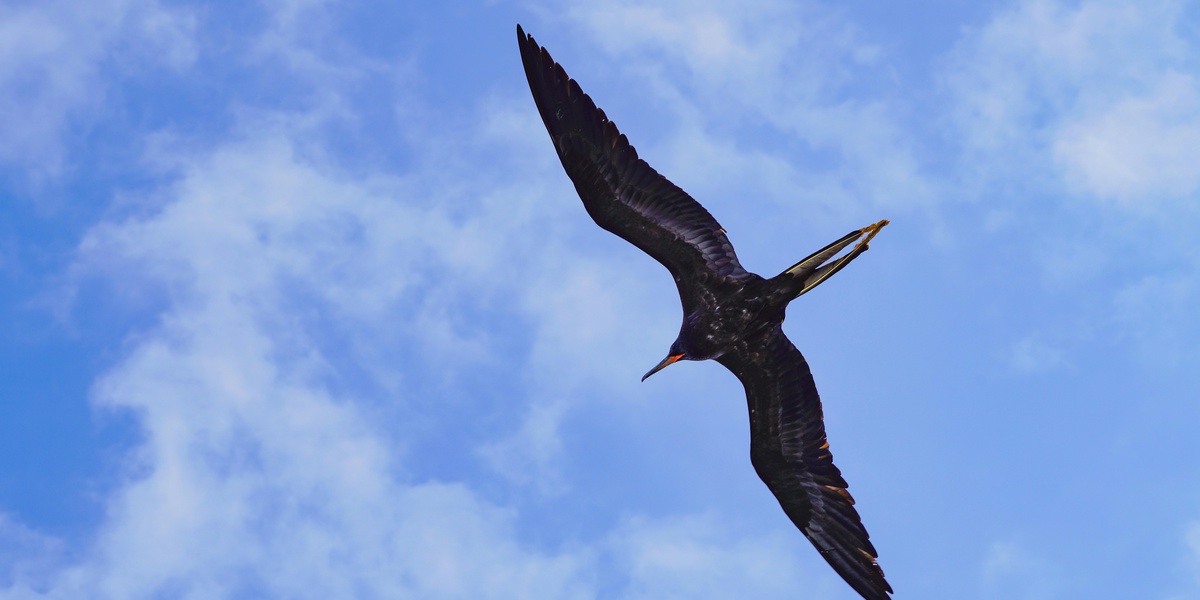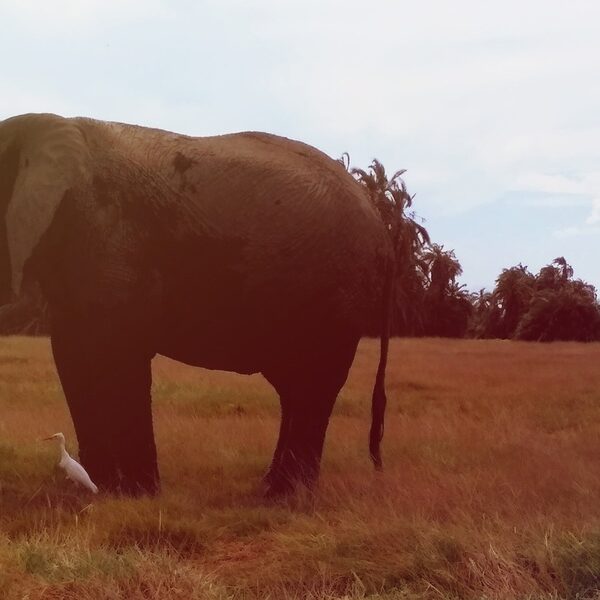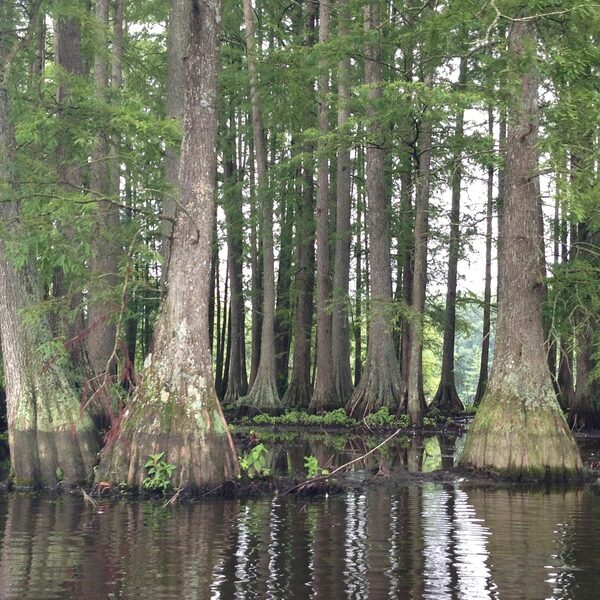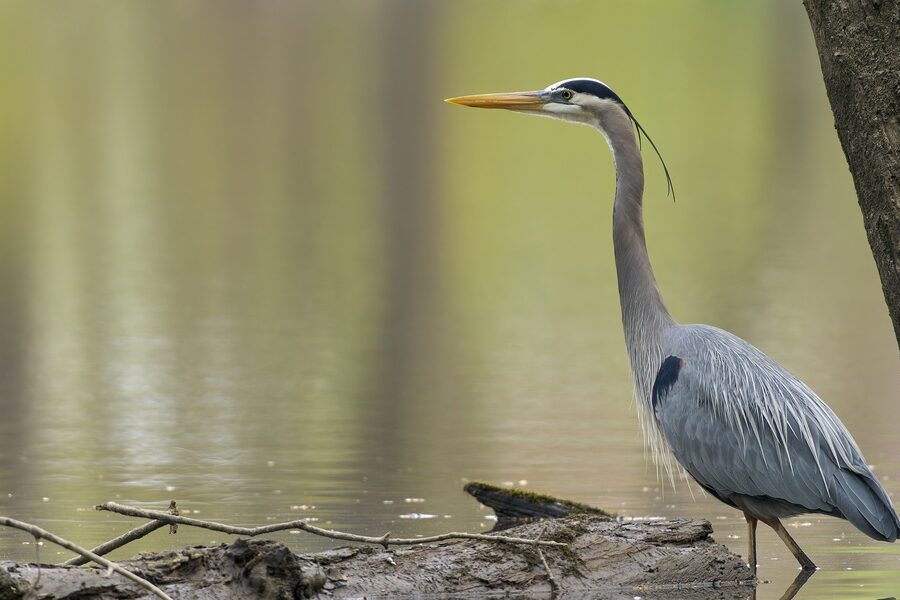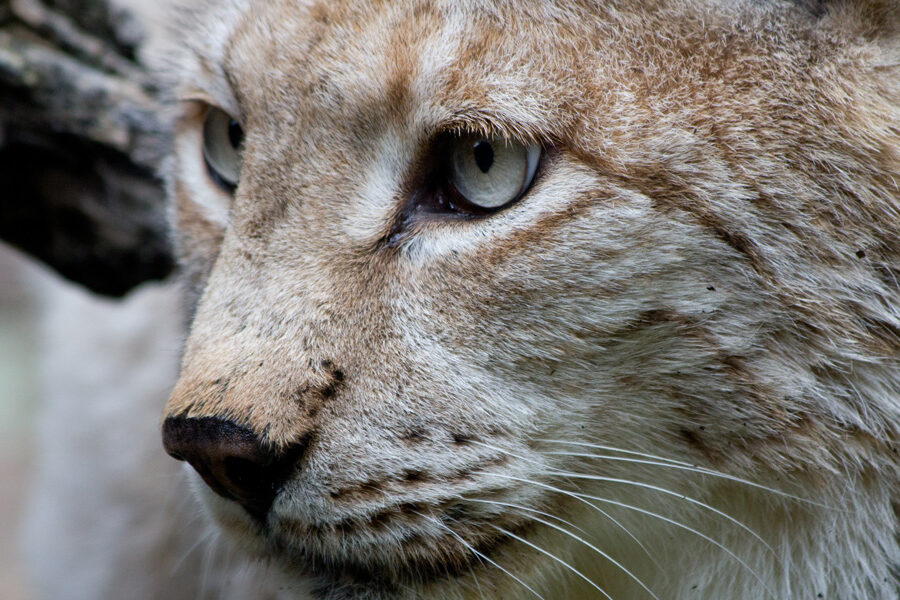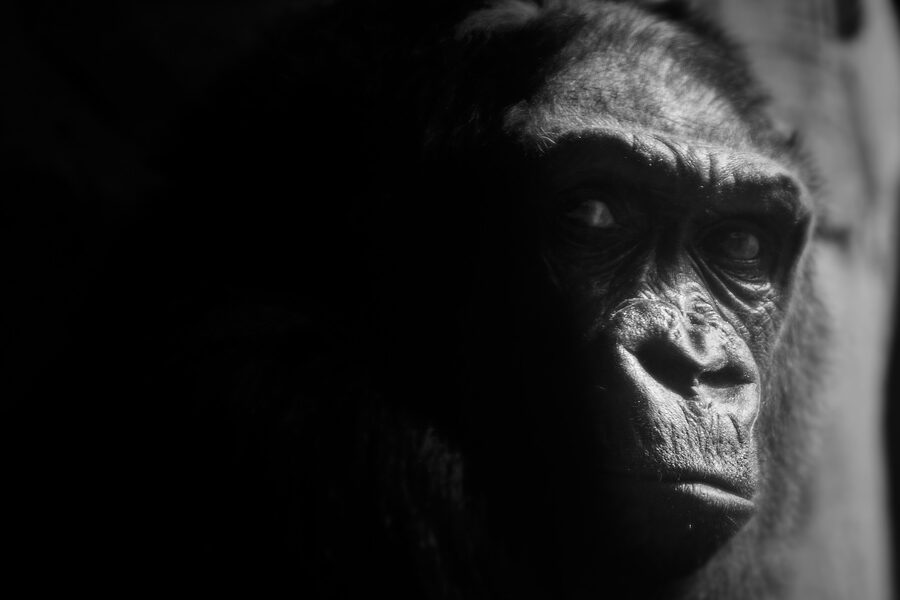Antigua and Barbuda’s islands combine limestone ridges, mangroves, coastal scrub and reef-lined shores, creating a variety of habitats for birds, reptiles and marine life. Small island ecosystems mean many species are adapted to very specific niches across the two main islands and nearby cays.
There are 44 Animals of Antigua and Barbuda, ranging from Antigua Bank Anole to Zenaida Dove. For each entry you’ll find Scientific name,IUCN status,Habitat & range listed so you can identify species and note conservation information — details you’ll find below.
Which species should I look for on a visit?
Start with common shorebirds and seabirds, then use the Scientific name,IUCN status,Habitat & range columns to target specific habitats; the IUCN status helps flag species of conservation concern and habitat notes point you to the best places and times to look.
How can I use the IUCN and habitat information for conservation or planning?
Treat the IUCN status as a quick risk indicator and the Habitat & range field as a practical guide to where species live; combine scientific names with local guides, protected-area maps and recent observations to plan visits or prioritize conservation actions.
Animals of Antigua and Barbuda
| Name | Scientific name | IUCN status | Habitat & range |
|---|---|---|---|
| Magnificent Frigatebird | Fregata magnificens | Least Concern | Coastal cliffs, bays, nesting colonies on offshore cays |
| Brown Pelican | Pelecanus occidentalis | Least Concern | Coastal waters, rocky shores, harbors |
| Brown Booby | Sula leucogaster | Least Concern | Offshore islets, cliffs, marine colonies |
| Laughing Gull | Leucophaeus atricilla | Least Concern | Beaches, harbors, salt ponds, widespread |
| Red-billed Tropicbird | Phaethon aethereus | Least Concern | Seaward cliffs, offshore islets, nesting sites |
| West Indian Whistling-Duck | Dendrocygna arborea | Vulnerable | Mangroves, freshwater ponds, coastal wetlands |
| Bananaquit | Coereba flaveola | Least Concern | Gardens, scrub, coastal woodland, widespread |
| Zenaida Dove | Zenaida aurita | Least Concern | Woodland edge, scrub, agricultural areas |
| Caribbean Elaenia | Elaenia martinica | Least Concern | Open woodland, gardens, scrub; widespread |
| Antillean Mango | Anthracothorax dominicus | Least Concern | Gardens, flowering trees, mangrove edges |
| Brown Noddy | Anous stolidus | Least Concern | Offshore cays, seabird colonies, open ocean |
| Sooty Tern | Onychoprion fuscatus | Least Concern | Pelagic, nesting on remote islands |
| Bridled Tern | Onychoprion anaethetus | Least Concern | Coastal waters, rocky islets, nesting crevices |
| Osprey | Pandion haliaetus | Least Concern | Coastal shorelines, mangroves, estuaries |
| Ruddy Turnstone | Arenaria interpres | Least Concern | Rocky shores, reefs, sandy beaches |
| Sanderling | Calidris alba | Least Concern | Sandy beaches, wrack lines, coastal foraging |
| Willet | Tringa semipalmata | Least Concern | Mudflats, salt ponds, beaches |
| Semipalmated Sandpiper | Calidris pusilla | Least Concern | Mudflats, beaches, estuaries |
| Royal Tern | Thalasseus maximus | Least Concern | Beaches, offshore waters, roosting sites |
| Black-necked Stilt | Himantopus mexicanus | Least Concern | Salt ponds, shallow wetlands, mudflats |
| Antiguan Racer | Alsophis antiguae | Critically Endangered | Dry scrub, offshore islets, historically Antigua |
| Antigua Bank Anole | Anolis leachii | Least Concern | Woodland, coastal scrub, widespread on Antigua Bank |
| Common Garden Anole | Anolis cristatellus | Least Concern | Gardens, scrub, urban areas |
| Green Iguana | Iguana iguana | Least Concern | Coastal woodland, introduced populations, stone walls |
| Common House Gecko | Hemidactylus mabouia | Least Concern | Buildings, urban areas, night-active |
| Johnstone’s Whistling Frog | Eleutherodactylus johnstonei | Least Concern | Leaf litter, gardens, moist microhabitats |
| Jamaican Fruit Bat | Artibeus jamaicensis | Least Concern | Caves, hollow trees, forest edges |
| Mexican Free-tailed Bat | Tadarida brasiliensis | Least Concern | Caves, buildings, foraging over open areas |
| Small Indian Mongoose | Herpestes auropunctatus | Least Concern | Urban edges, scrub, agricultural areas, introduced |
| Black Rat | Rattus rattus | Least Concern | Urban areas, agricultural land, introduced |
| House Mouse | Mus musculus | Least Concern | Human habitations, farms, introduced |
| Bottlenose Dolphin | Tursiops truncatus | Least Concern | Coastal waters, bays, nearshore reefs |
| Humpback Whale | Megaptera novaeangliae | Least Concern | Offshore migratory routes, deep water |
| Sperm Whale | Physeter macrocephalus | Vulnerable | Deep offshore waters, submarine canyons |
| Loggerhead Turtle | Caretta caretta | Vulnerable | Beaches (nesting), coastal foraging grounds |
| Green Turtle | Chelonia mydas | Endangered | Seagrass beds, beaches, coastal bays |
| Hawksbill Turtle | Eretmochelys imbricata | Critically Endangered | Coral reefs, rocky coastlines, nesting beaches |
| Leatherback Turtle | Dermochelys coriacea | Vulnerable | Open ocean, nesting beaches |
| Nassau Grouper | Epinephelus striatus | Endangered | Reefs, rocky ledges, spawning aggregations |
| Queen Conch | Lobatus gigas | Vulnerable | Shallow seagrass beds, sandy bottoms |
| Caribbean Spiny Lobster | Panulirus argus | Least Concern | Reef crevices, rocky ledges, shallow waters |
| Caribbean Reef Shark | Carcharhinus perezi | Near Threatened | Reefs, drop-offs, nearshore waters |
| Stoplight Parrotfish | Sparisoma viride | Least Concern | Coral reefs, rocky substrate, seagrass margins |
| Queen Angelfish | Holacanthus ciliaris | Least Concern | Coral reefs, sponges, rocky areas |
Images and Descriptions
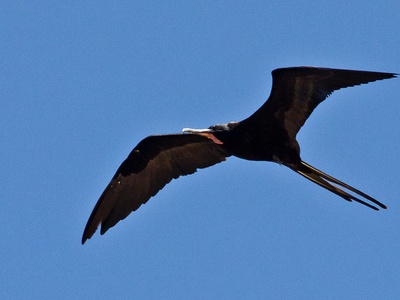
Magnificent Frigatebird
A dramatic large seabird with a forked tail and males’ inflatable red throat pouch. Common over Antigua’s coasts, they piratically steal food and loaf over harbors; easy to spot near nesting cays and mangroves.
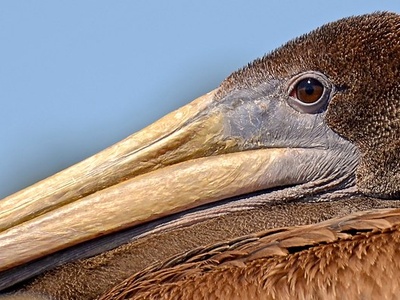
Brown Pelican
Chunky coastal bird that dives for fish; brown adults common around Antigua’s bays and reefs. Often seen perching on pilings and beaches; locally valued and recovered from past declines.
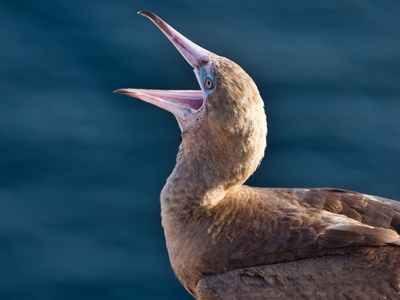
Brown Booby
A plunge-diving seabird with a stubby yellow bill and dark body. Breeds on small offshore islands and cliffs; frequent around fishing boats and rocky shores in both islands’ waters.
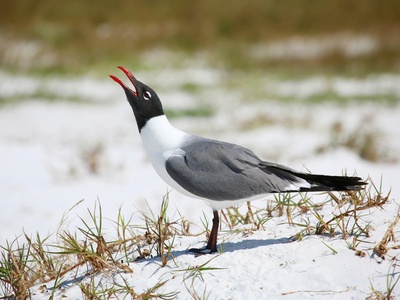
Laughing Gull
A familiar coastal gull with a black hood in breeding season and raucous calls. Abundant on beaches and salt flats, scavenges at shorelines and around towns throughout Antigua and Barbuda.
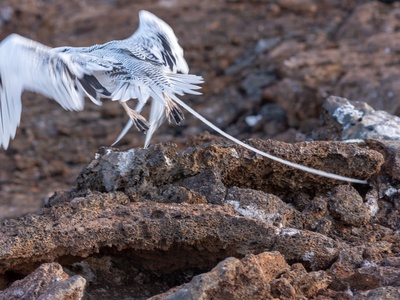
Red-billed Tropicbird
Elegant white seabird with long tail streamers and bright red bill. Nests on remote cliffs and small islands; best seen on boat trips where they glide over open water.
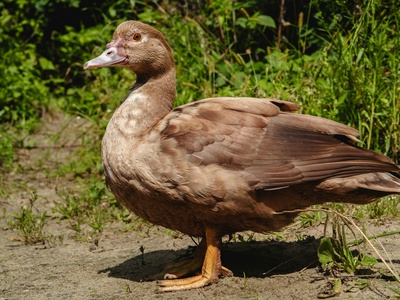
West Indian Whistling-Duck
A long-necked, whistling duck that prefers mangroves and ponds. Locally uncommon but important for wetland health; watch for small flocks at protected ponds and salt marshes.
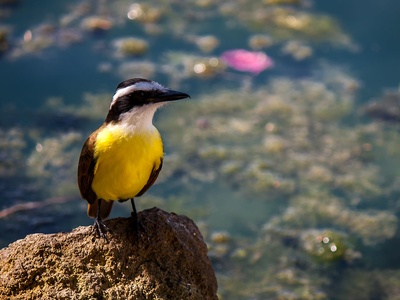
Bananaquit
A tiny, active nectar-feeding bird with curved bill and energetic calls. Very common in towns, gardens and scrub; often seen at flowering trees and feeders across both islands.
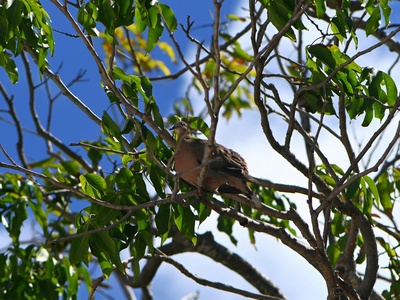
Zenaida Dove
A soft-toned, chunky dove with subtle patterns on wings. Common and tame around villages and dry scrub, often feeding on seeds on the ground and perching in low trees.
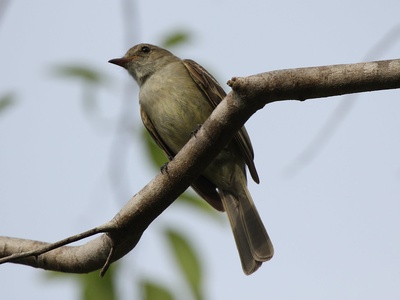
Caribbean Elaenia
A small, inconspicuous flycatcher with a soft call. Frequently found in coastal and inland scrub; look for it making short sallies from low perches to catch insects.
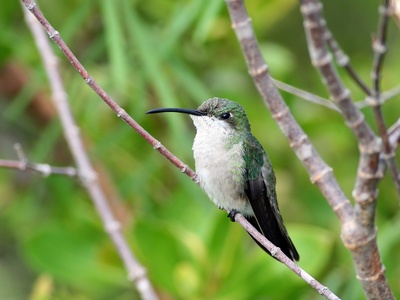
Antillean Mango
A medium-sized hummingbird with glossy plumage and fast-winged hovering. Common at nectar sources and fruiting trees; easy to see in gardens and coastal vegetation.
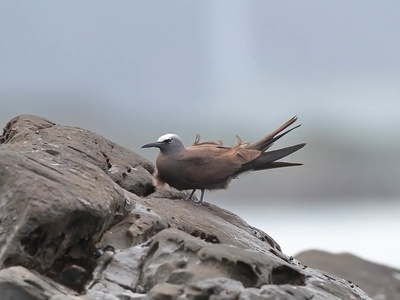
Brown Noddy
Dark-bodied tern relative that nests in large colonies on offshore islets. Often flies low over water looking for small fish; common on cays around Antigua and Barbuda.
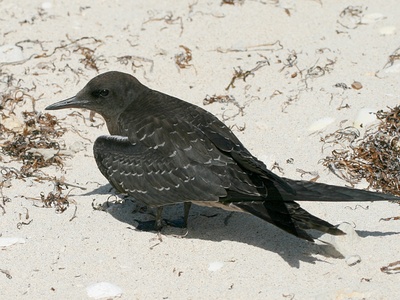
Sooty Tern
A pelagic tern that breeds in dense colonies on isolated cays. Mostly seen offshore; follow boat trips to seabird colonies for the best views of hovering flocks.
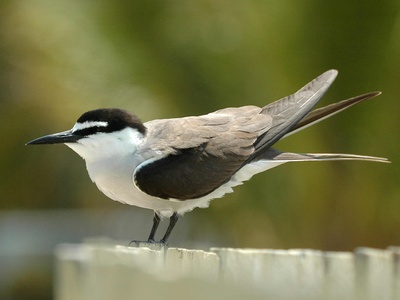
Bridled Tern
A medium tern with distinctive facial markings. Nests on small islets and rocky shores; often seen flying low over waves or perched on rocks near nesting sites.
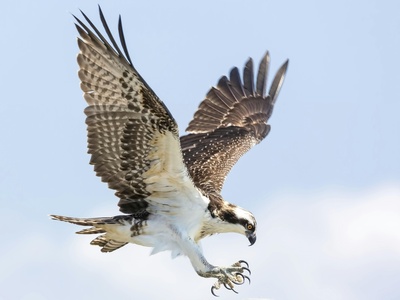
Osprey
A fish-eating raptor frequently seen hovering and plunging for prey. Scattered pairs hunt around Antigua’s bays and mangroves; conspicuous and easy to spot from shorelines.
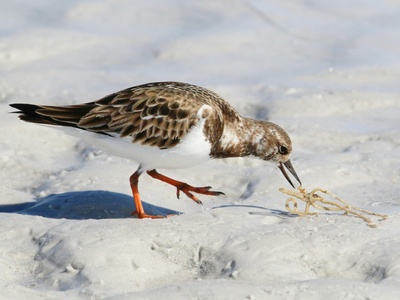
Ruddy Turnstone
A compact shorebird that flips stones to find invertebrates. A regular migrant and winter visitor across Antigua’s rocky and sandy coasts; bold and active on shorelines.
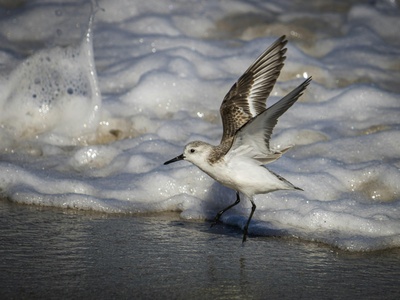
Sanderling
Small, fast-moving sandpiper running at the water’s edge. Common migrant and winter visitor on Antigua’s beaches; watch flocks chasing waves foraging along the surf zone.
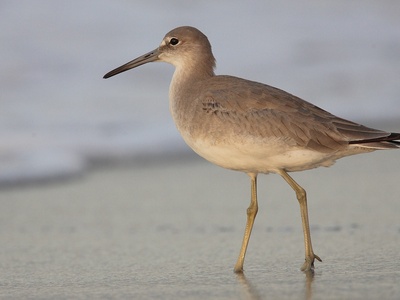
Willet
A large, long-legged shorebird with loud calls. Often seen probing mudflats and tidal pools; conspicuous on Antigua’s wetlands and coastal flats during migration and winter.
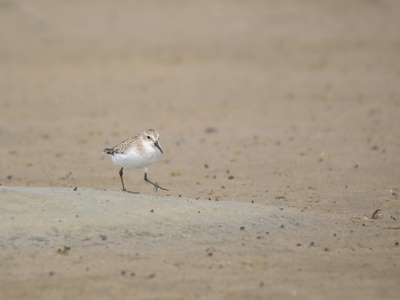
Semipalmated Sandpiper
Tiny migrant sandpiper forming flocks on mudflats and sandy spits. Common during migration seasons; useful indicator of healthy intertidal foraging areas.
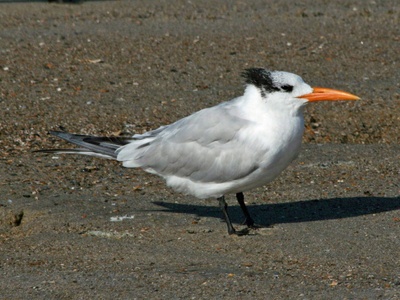
Royal Tern
A large, crested tern with an orange bill that dives for fish. Frequently seen around Antigua’s coasts and offshore fishing grounds in sizable flocks.
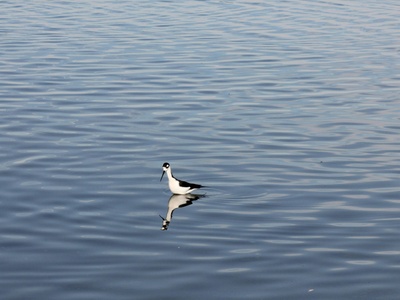
Black-necked Stilt
Long-legged, distinctive shorebird with striking black-and-white plumage. Wades shallow salt ponds and lagoons; readily found in protected wetland areas on both islands.
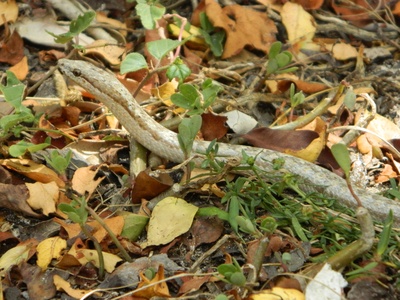
Antiguan Racer
A tiny, shy snake once near extinction but recovering on protected islets. Endemic to Antigua Bank; notable conservation success after eradication of invasive rats on breeding cays.
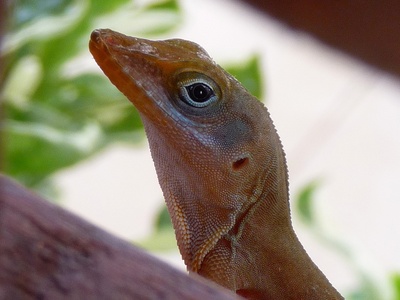
Antigua Bank Anole
A medium anole with strong territorial behaviour; common on trees and walls. Active during the day, often seen around human habitation and coastal scrub habitats.
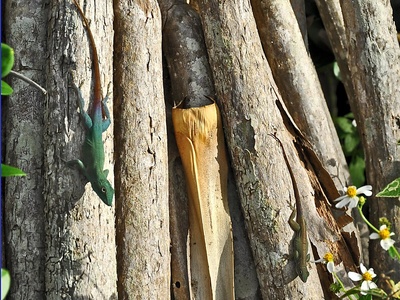
Common Garden Anole
A small, adaptable lizard that darts across walls and vegetation. Frequently seen in gardens and yards; males display colorful dewlaps during territorial displays.
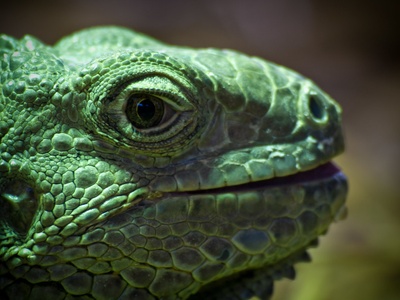
Green Iguana
Large herbivorous lizard commonly introduced on Caribbean islands. Sometimes seen sunning on walls and trees; can be locally common where established.
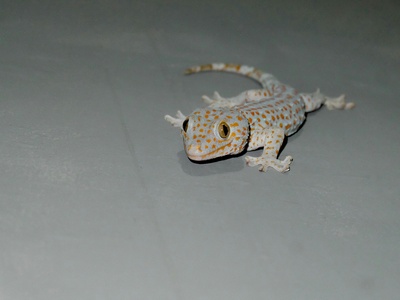
Common House Gecko
Noisy nocturnal gecko often found on walls and lights hunting insects. Introduced and widespread; easy to spot at night around houses and streetlights.
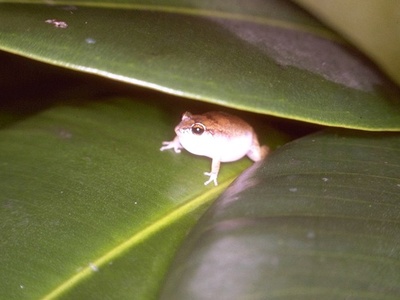
Johnstone’s Whistling Frog
A tiny, terrestrial frog with a high-pitched whistle. Common around gardens and damp leaf litter; nonaquatic breeding makes it tolerant of island habitats.
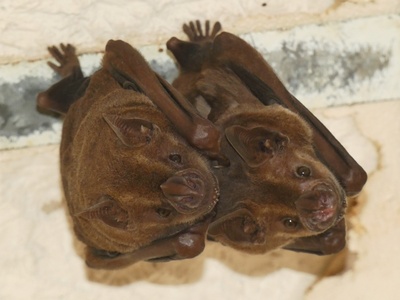
Jamaican Fruit Bat
A medium fruit bat that feeds on fruit and pollen. Common in wooded areas and mangroves at night; plays important roles in seed dispersal.
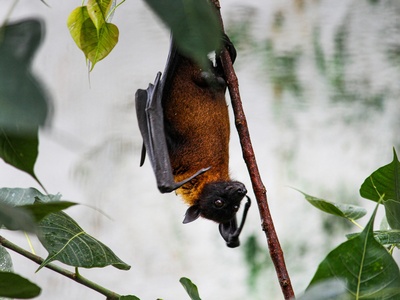
Mexican Free-tailed Bat
Fast-flying insectivorous bat often detected at dusk. Roosts in crevices and buildings; common aerial hunter above fields and coastline after dark.
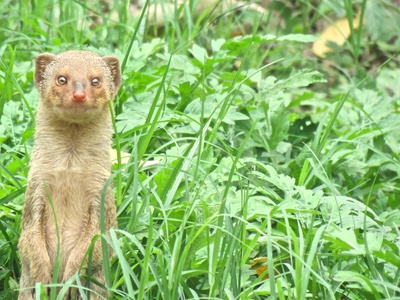
Small Indian Mongoose
Introduced predator established across many Caribbean islands. Hunts reptiles, birds and invertebrates; implicated in declines of ground-nesting birds and native reptiles.
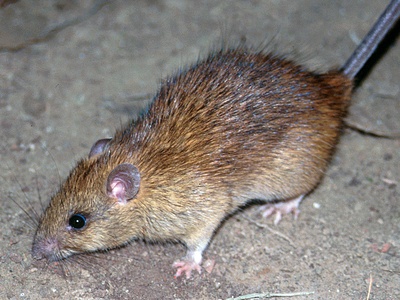
Black Rat
A widespread introduced rodent that frequents settlements, docks and gardens. Common on both islands; important invasive species affecting native birds and reptiles.
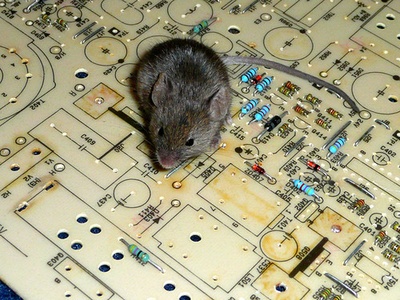
House Mouse
Small, ubiquitous introduced mammal living near people. Often found in houses and storage areas; common but generally unobtrusive.
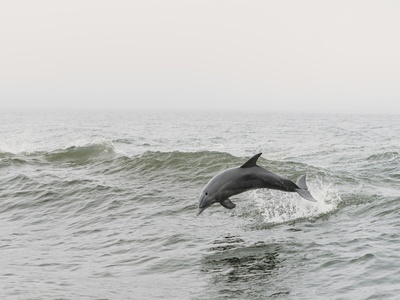
Bottlenose Dolphin
Common charismatic dolphin seen in small pods nearshore and around reefs. Frequently encountered on boat trips and popular with wildlife-watchers around Antigua and Barbuda.
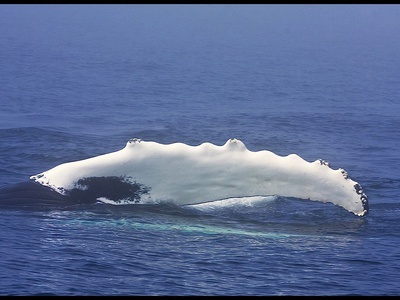
Humpback Whale
Large migratory whale passing Antigua’s waters seasonally. Known for spectacular breaching and song; best seen on winter whale-watching cruises.
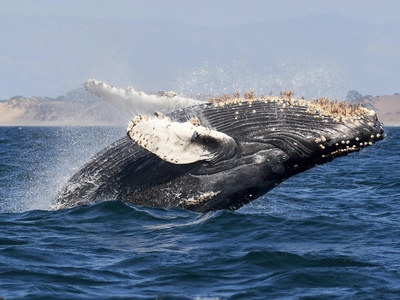
Sperm Whale
Deep-diving behemoth that feeds on squid. Occasional in Antigua’s deep waters; a special sighting for offshore wildlife tours and marine researchers.
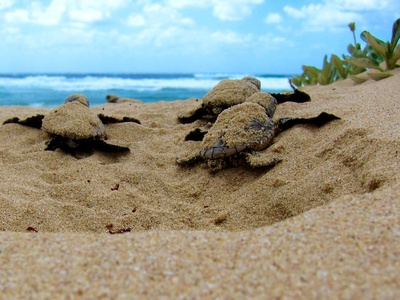
Loggerhead Turtle
Large marine turtle that nests on some Caribbean beaches and forages near reefs. Nesting is sporadic in Antigua; conservation efforts protect known nesting beaches.
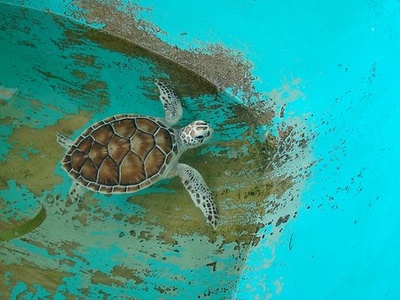
Green Turtle
Large herbivorous turtle that forages on seagrass and occasionally nests. Important for seagrass ecosystem health; protected and a focus of local conservation.
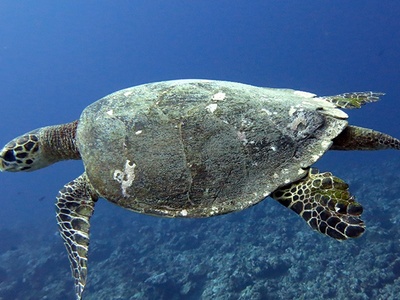
Hawksbill Turtle
Colorful shell and pointed beak; key coral reef species feeding on sponges. Critically endangered and legally protected; seen around reefs and occasional nesting beaches.
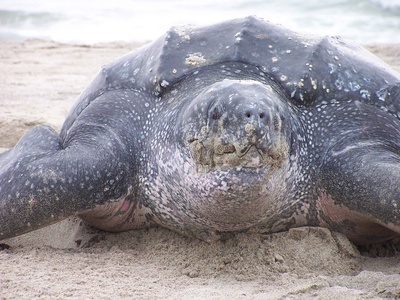
Leatherback Turtle
The largest sea turtle, leatherback migrates through Caribbean waters and nests on wide sandy beaches. Less common than other turtles but crucial to marine ecosystems.
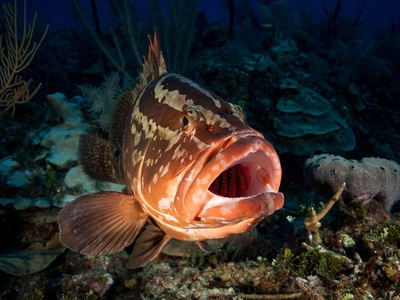
Nassau Grouper
A large reef fish that forms seasonal spawning aggregations. Historically important food fish and now endangered; divers may encounter juveniles on reefs.
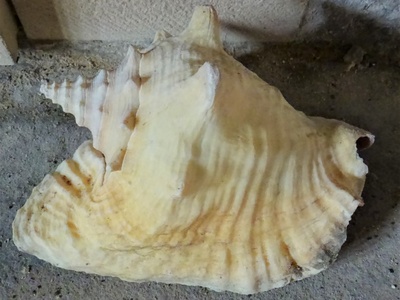
Queen Conch
Large marine gastropod prized for meat and shell. Populations have declined from overharvest; visible in seagrass beds and often subject to local fishery rules.
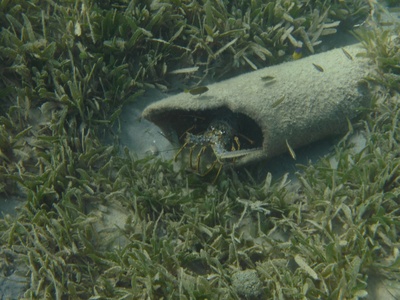
Caribbean Spiny Lobster
Economically important nocturnal lobster found in reef crevices. Common in local fisheries; divers often spot them sheltering under ledges.
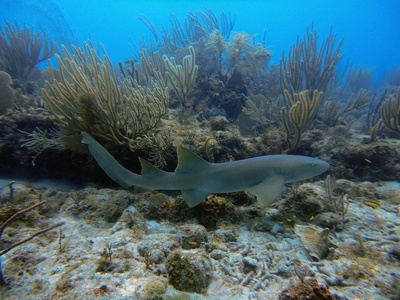
Caribbean Reef Shark
Common medium-sized shark of reef ecosystems, often seen by divers. Generally not aggressive; part of healthy reef communities around Antigua and Barbuda.
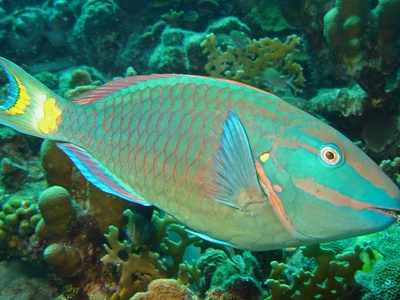
Stoplight Parrotfish
Colorful herbivorous fish that scrapes algae and coral, aiding reef health. Frequently seen on snorkel and dive sites; an obvious reef resident.
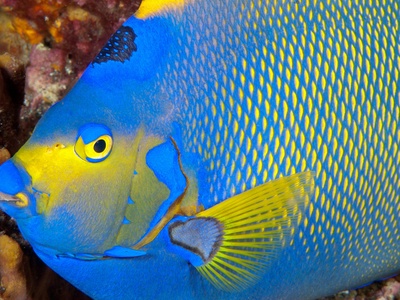
Queen Angelfish
Vibrant blue-and-yellow angelfish commonly found around reefs and deeper coral heads. Striking and often seen in pairs or small groups near sponge-rich areas.
